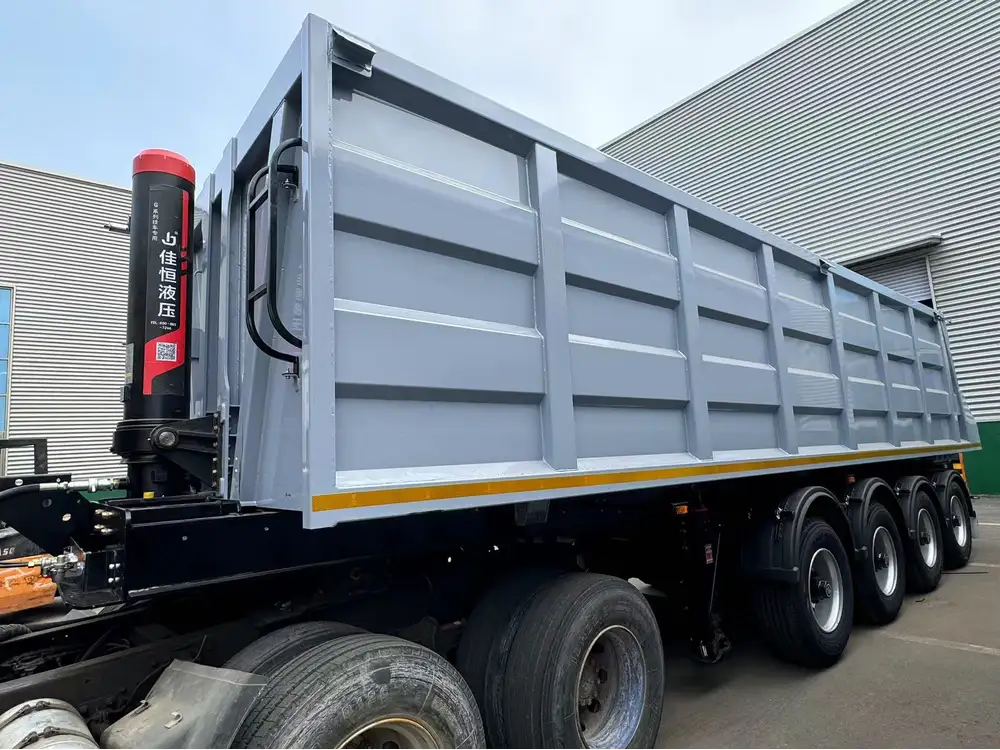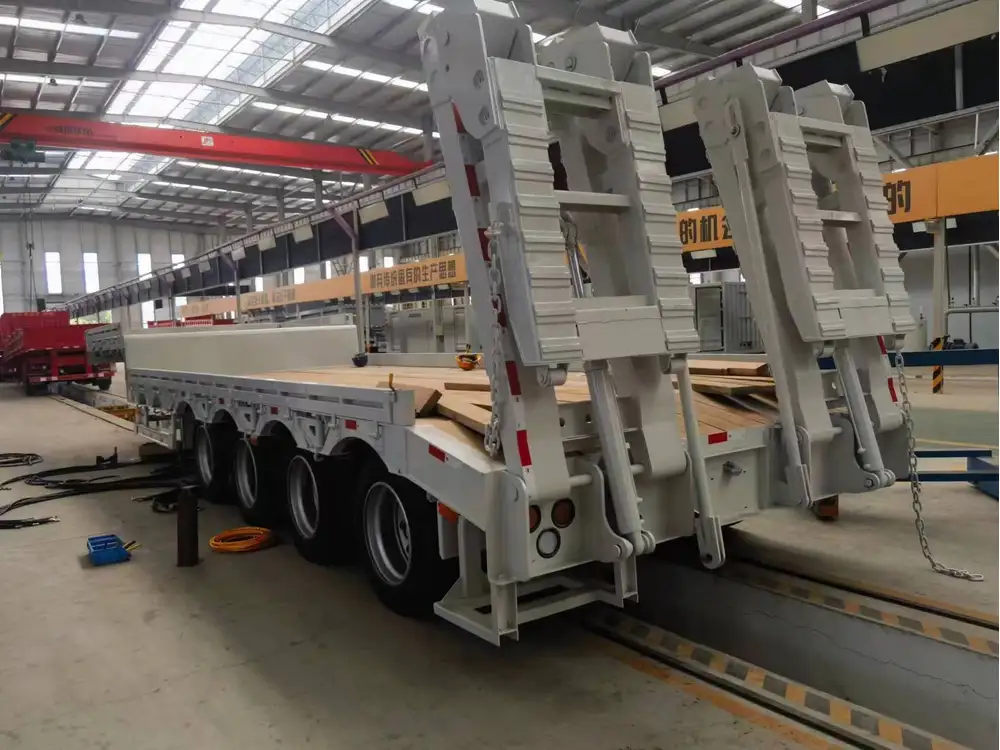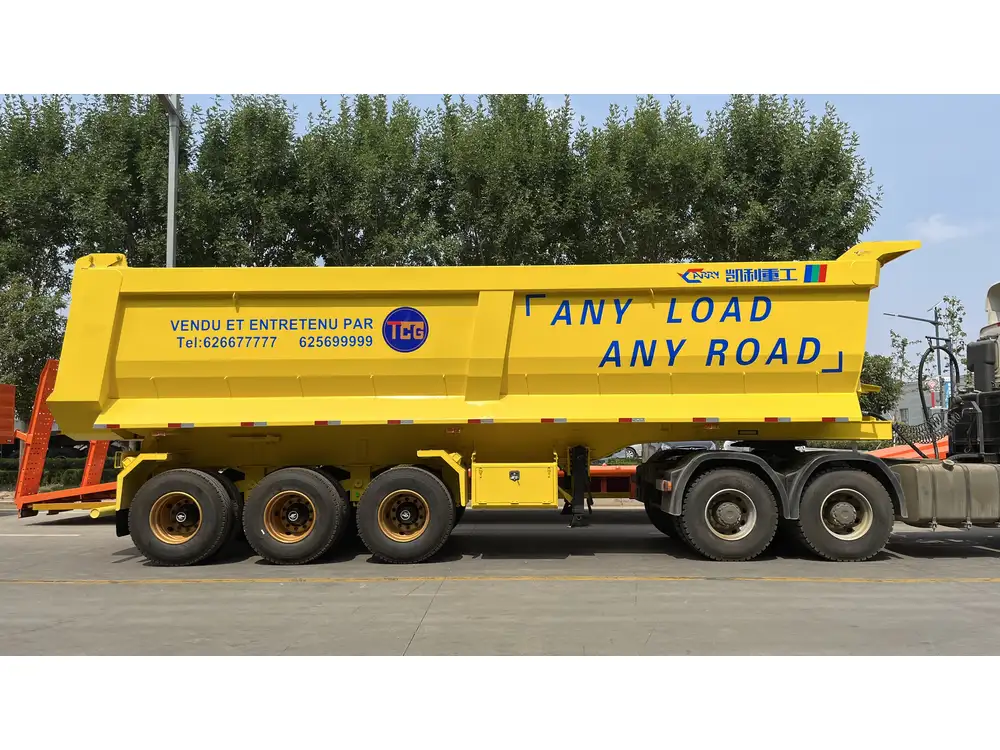Flatbed trailers have become indispensable in the transportation industry, serving an array of purposes—from hauling machinery to delivering building materials. While many consider factors like load capacity, durability, and materials when choosing the right semi-trailer, understanding the average height of flatbed trailers is equally critical. This article delves deep into the specifics of flatbed trailer height, you will find insights into regulations, applications, and how to select the right trailer height for different cargo needs.
Table of Contents
- Flatbed Trailer Specifications
- Regulations Governing Trailer Heights
- Selecting the Right Height for Your Needs
- Common Usage Scenarios
- Conclusion
Flatbed Trailer Specifications
When discussing flatbed trailers, height is often one of the critical specifications considered. However, height is not a standalone measurement; it correlates with other specifications such as length, width, and weight capacity.

Average Height of Flatbed Trailers
Flatbed trailers typically range in height from 48 to 60 inches when unloaded. The standard flatbed trailer height is often around 55 inches. This height contributes significantly to the overall loading and unloading process—ensuring compatibility with loading docks and cranes.
| Trailer Type | Average Height (inches) | Typical Load Capacity |
|---|---|---|
| Standard Flatbed | 48 – 60 | Up to 48,000 lbs |
| Step Deck | 48 – 60 | Up to 40,000 lbs |
| Lowboy Trailer | 22 – 24 | Up to 50,000 lbs |
Factors Influencing Height
Several factors can lead to variations in trailer height:
- Axles: More axles may allow for a higher trailer.
- Tire Size: The size of the tires used can also raise or lower the overall height.
- Load Position: The type of cargo and how it is loaded can affect the required height.
Types of Flatbed Trailers
Understanding the different types of flatbed trailers will help you decide on height and other specifications suited to your needs:
- Standard Flatbed Trailers: These are 48-53 feet long and primarily used for general freight.
- Step Deck Trailers: These trailers have a lower deck height, typically varying from 10 to 12 feet. Useful for transporting tall loads that may not comply with height regulations when stacked on standard flatbeds.
- Lowboy Trailers: These trailers have a bed height of 22 to 24 inches, allowing for the transportation of oversized machinery or loads that exceed standard height limitations.

Regulations Governing Trailer Heights
In the United States, trailer height regulations are governed by both federal and state laws. The maximum height for commercial vehicles, including flatbed trailers, is generally capped at 13.5 feet in most states. This regulation exists to ensure safety on highways and bridges, allowing for the safe passage of vehicles.
| State | Maximum Height (feet) | Notes |
|---|---|---|
| California | 14 | Special exceptions on certain routes |
| Texas | 13.5 | Standard and universal |
| New York | 13.5 | Additional regulations for NYC |
Violating these regulations can result in fines, roadblocks, and even incidents during transit. Therefore, knowing your flatbed trailer’s height—and any cargo loaded on it—is essential for compliance.
Selecting the Right Height for Your Needs
Choosing the right height for your flatbed trailer will largely depend on the types of loads you intend to carry. Key considerations include:
Cargo Type and Dimensions
- Low Loads: If transporting machinery or other low-profile cargo, a lowboy trailer with a height of approximately 24 inches may be ideal.
- Standard Freight: A standard flatbed trailer with a height of 55 inches generally accommodates a wide array of standard freight.
- Oversized Cargo: For taller loads, step deck trailers allow for greater height flexibility while maintaining safety and compliance.

Loading Docks and Equipment Compatibility
Always consider the loading facilities available and the equipment used for loading and unloading. Ensure that your trailer’s height aligns with standard loading dock heights, typically around 4 feet. Utilizing flatbed trailers of appropriate dimensions simplifies the logistics of loading and unloading processes.
Height Adjustability
Some users prefer trailers with adjustable heights. This feature allows for versatility accommodating various cargo types without compromising loading capabilities.
Common Usage Scenarios

Construction Industry
Flatbed trailers are prevalent in the construction sector, essential for transporting materials such as steel beams, heavy machinery, and building supplies. Standard-sized flatbeds, typically around 55 inches high, are often the preferred choice for builders, providing the necessary height for loading without exceeding legal regulations.
Transportation of Machinery
When moving heavy equipment, the machinery’s specifics play a pivotal role in trailer selection. Lowboy trailers, which offer a lower height, are often used for transporting excavators and bulldozers, effectively lowering the center of gravity and enhancing stability during transit.
Flatbed Trailers in Agriculture
In agriculture, flatbed trailers serve multiple purposes—from transporting crops to moving large farming equipment. Depending on the nature of the load, either standard or step deck trailers may be used, with height considerations closely aligned with the specific requirements for loading rates and equipment compatibility.

Conclusion
Understanding the average height of flatbed trailers is crucial for maximizing efficiency in transport operations. Considering different factors such as load type, state regulations, and the physical attributes of the trailer will ensure compliance and enhance operational effectiveness. Attention to these details will lead to better decision-making in securing the right trailer for your specific needs.
By staying informed about the average specifications, along with regulatory constraints and practical applications, manufacturers and consumers alike can ensure better resource management, increase safety, and optimize logistics in the transport industry. Always prioritize height as a key specification when selecting your flatbed trailer to ensure seamless operations and a hassle-free experience.



